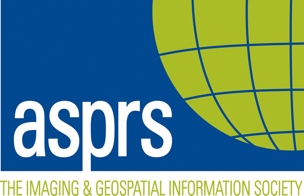Bethesda, MD — The American Society for Photogrammetry and Remote Sensing (ASPRS) has announced two new LiDAR certifications, one Professional LiDAR certification and one Technologist LiDAR certification.
SPAR spoke with Mike Renslow, the chair of the ASPRS Evaluation for Certification Committee, to find out who these certifications are for, what benefits they offer their holders, and what ASPRS is working on next.
A Mapping Scientist, LiDAR certification, Renslow said, is for “someone who works in a position and is responsible, in charge. So that may be supervisory, that may be a senior technical person. The key element is that you’re responsible and in charge. You take full responsibility for project management.”
He offered an example. “If you’re a certified mapping scientist in LiDAR, you probably have full responsibility for project planning, flight planning, design. You have an understanding of the terrain, you know about the instrumentation to use, and the altitude to fly at to get the point density that’s required to do a certain operation with LiDAR mapping. You’re also responsible for overseeing the quality assurance and the quality control.”
As Renslow explained it, the Certified LiDAR Technologist certification is “for someone who is basically providing technical support for some elements of the geospatial work requirements, someone who takes their working tasks from someone at the professional level. The technologist may be someone who comes to work every day and takes raw LiDAR data and puts it into real world coordinates, and they tile it and get it ready for the next step in processing. Or maybe they’re someone who reviews data for something like data gaps.”
The technologist is defined by their work: “very highly technical, somewhat routine, and supporting real-world projects.”
There are a number of benefits to gaining an ASPRS certification, Renslow said, not the least of which being the large number of people who perform mapping services. “There are a lot of folks doing what we do,” he said, “and so one of the key elements for certification is that it does make a statement that you have gone through a rigorous peer-review process based on standards for performance and you have passed. You took an examination in your field and you passed it.”
“It’s recognition,” he added, “that you know what you’re doing.”
Renslow told me that though ASPRS doesn’t solicit or advertise for their certifications to be required on projects, it is not uncommon for agencies to require them anyway. For instance, the USGS may require that the project manager will be an ASPRS certified photogrammetrist.
“And it does provide career development, too,” he said. “And I know for some folks, it’s more money—you get paid more, which is important, too.”
These certifications, which join a number of other mapping certifications offered by ASPRS, have been three years in the making. Renslow explains that they have involved extensive work on developing curriculum, deciding tasks on which to test applicants, testing early versions of the test, and so on.
UAS mapping, the next batch of certifications from ASPRS, are expected to be available for application within a year and a half.






